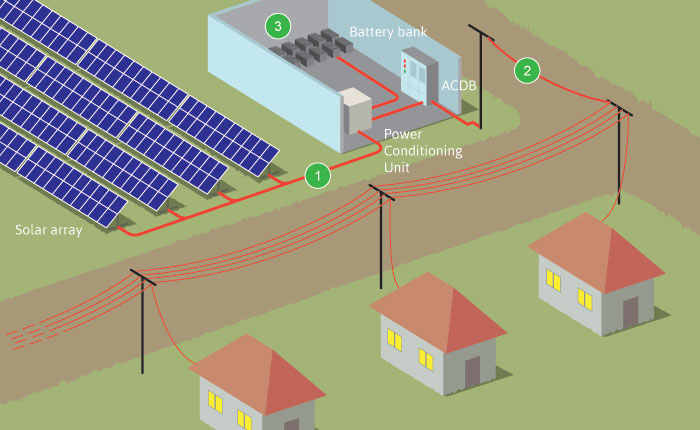Solar Microgrid


Solar Microgrid
Villages can now have access to electricity by investing in their own microgrid power plant. The size of a solar microgrid depends upon the number of solar panels and wattage comprising the solar array. The requirement and size
of a microgrid is calculated by adding the power needs of individual homes in the village that will be connected together.
A typical solar microgrid can range from 1 KW to several megawatts. A typical rural house requires approximately 2 units of electricity and so, for a village of 100 homes, a 4 KW microgrid is sufficient. A 4 KW plant helps generate
electricity worth Rs 33,000 per year.

- Every solar PV panel connected in the array generates electricity by converting solar radiation into electrical energy. All PV panels are connected in a particular order of parallel and series combinations to provide the required
voltage. The electricity generated from the array of panels is transmitted to a central controller called the Power Conditioning Unit (PCU), which is, in simple terms, a large power inverter. The PCU is connected to the
Distribution Box (DB) on one hand and the battery bank on the other.
- The PCU controls, regulates and directs the electrical energy transmitted from the array, and supplies electricity directly to homes, shops, offices, street lights etc.
- During the day if the power generated is not used or surplus power is generated, the PCU directs this to the battery bank which stores power. This power can then be used at night (after the sun sets). The microgrid and battery
bank are connected to a computer for local power usage monitoring. With the addition of a modem, this information can be accessed from a remote location, eliminating the need for local manpower to monitor the system.


